Overview
The Neuroradiology Fellowship at Mayo Clinic’s campus in Phoenix/Scottsdale, Arizona, covers all disciplines of adult and pediatric neuroradiology, including diagnostic imaging of the brain, spine, and head and neck.
Firmly rooted in the three shields (clinical practice, education, and research) of the Mayo Clinic model, this one-year, ACGME-accredited fellowship program provides training in all modalities of diagnostic neuroradiology, including CT, MRI, radiography, fluoroscopy, angiography, and PET, as well as training in imaging-guided interventions of the brain, spine, and head and neck.
As a neuroradiology fellow, you will enjoy:
- A high faculty-to-trainee ratio
- A highly complex case load
- Cutting-edge technology (including clinical 7T MRI and photon counting CT) and state-of-the-art facilities
- Exposure to advanced neuroimaging techniques
- Education and mentorship by renowned neuroradiologists in a highly collegial and supportive learning environment
Mayo Clinic is an internationally recognized destination medical center and high-volume academic environment, which will prepare you for subspecialty practice or an academic career in neuroradiology.
4-week rotations in subspecialty neuroradiology domains
faculty-to-fellow ratio
neuroradiology fellows accepted annually
Accreditation, certification, program history
Accreditation
This program fulfills the training requirements as defined by the American Board of Radiology and is accredited by the Accreditation Council for Graduate Medical Education (ACGME).
Certification
You will be eligible to take the initial certification neuroradiology subspecialty examination upon completion of the fellowship and one year of clinical practice or additional training, as required by the American Board of Radiology.
Program history
The Neuroradiology Fellowship in Phoenix/Scottsdale, Arizona, will host its first fellows in 2027.
Application process
Positions
Two fellowship positions are available on a competitive basis each year in the Neuroradiology Fellowship at Mayo Clinic’s campus in Phoenix/Scottsdale, Arizona.
We review all applications of qualified candidates and offer interviews based upon merit and strength of application, including letters of support.
Qualifications
-
Must be board-certified or board-eligible for certification in their area of interest
-
Have completed an Accreditation Council for Graduate Medical Education (ACGME) four-year diagnostic radiology residency program
Also see general admissions requirements.
How to apply
The academic year begins July 1.
You must submit a completed application by following match timelines of the year preceding the appointment date. Early application is encouraged.
You must apply through the Electronic Residency Application Service (ERAS) for fellowship applicants.
The Neuroradiology Fellowship is a matched program that abides by all rules and regulations as specified and required by the National Residency Match Program (NRMP). Additionally, we adhere to the guidelines set forth by the Society of Chairs in Academic Radiology Departments (SCARD) fellowship embargo.
- To apply to the program, visit the ERAS website. All applications to Mayo Clinic School of Graduate Medical Education programs must include these application materials. In addition, this fellowship requires three original letters of recommendation.
- Personal interviews with the program director and selected faculty will take place virtually during January-March of each year.
- Appointments are made through the Radiology Match, which is sponsored by the National Resident Matching Program (NRMP) Specialties Matching Service. All candidates must register through the Specialties Matching Service after submitting an application through ERAS.
Curriculum
Clinical training
The Neuroradiology Fellowship provides an opportunity for state-of-the-art radiology clinical and research training at the fellowship level. Mayo Clinic in Arizona is a specialty clinic that focuses on the diagnosis and management of complex medical conditions. The clinical rotations are high in volume, complex in scope of pathology, and include both diagnostic and procedural roles.
Rotation schedule
| Rotation | Length |
|---|---|
| General neuroradiology | 12 weeks (three 4-week blocks) |
| Head and neck imaging and intervention | 8 weeks (two 4-week blocks) |
| Spine imaging and intervention | 8 weeks (two 4-week blocks) |
| Pediatric neuroradiology | 8 weeks (two 4-week blocks) |
| Vascular neuroradiology | 4 weeks (one 4-week block) |
| Trauma/ED neuroradiology | 4 weeks (one 4-week block) |
| Second Shift neuroradiology | 4 weeks (one 4-week block) |
| Elective rotation | 4 weeks (one 4-week block) |
Rotation descriptions
General neuroradiology: The general neuroradiology rotation educates the fellow in competency-based diagnostic neuroimaging, basic neuroradiology procedural skills, and protocoling of cross-sectional neuroradiologic imaging. The rotation provides exposure to all areas of neuroimaging, including brain, neurovascular, spine, and head and neck imaging.
Head and neck imaging and intervention: The head and neck imaging and intervention rotation provides a deeper educational experience in competency-based diagnostic neuroimaging of the head and neck (including cranial nerves, face, paranasal sinuses, oral cavity, orbits, skull base, temporal bones, suprahyoid neck, infrahyoid neck, and brachial plexus), advanced head & neck procedural skills, and protocoling of cross-sectional head and neck imaging.
Spine imaging and intervention: The spine imaging and intervention rotation provides a deeper educational experience for the fellow in competency-based diagnostic neuroimaging of the spine, advanced spine procedural skills, and protocoling of cross-sectional spine imaging.
Pediatric neuroradiology: The pediatric neuroradiology rotation educates the fellow in competency-based diagnostic neuroimaging and protocolling of cross-sectional neuroradiologic imaging specific to pediatric patients. The rotation provides exposure to all areas of pediatric neuroimaging, including brain, neurovascular, spine, and head & neck imaging.
Vascular neuroradiology: The vascular neuroradiology rotation educates the fellow in competency-based diagnostic neurovascular imaging, protocoling of cross-sectional neurovascular imaging studies, and conventional cerebral and spinal catheter angiograms. Core components of this rotation includes procedural skills, angiographic interpretation, and pre- and post-procedural care.
Trauma/ED neuroradiology: The trauma/ED neuroradiology rotation educates the fellow in competency-based diagnostic neuroimaging with specific focus on high acuity, high volume emergency department-based imaging of the brain, spine, and head & neck.
Second shift neuroradiology: The second shift neuroradiology rotation educates the fellow in competency-based diagnostic neuroimaging with primary focus on high acuity, high complexity inpatient and emergency department-based imaging of the brain, spine, and head & neck with secondary focus on outpatient imaging exams.
Elective rotation: Fellows in good standing have the opportunity to choose from multiple elective rotations, which allow for deeper dives into subspecialty neuroimaging or research/academic pursuits.
Didactic training and electives
Didactic training
The Neuroradiology Fellowship education experience centers around reading room-based learning. Depending on the specific rotation, the fellow is assigned to a supervising faculty member (or faculty members) each day for one-on-one learning with case-by-case feedback. As experience grows and competencies are met, faculty work with the fellow to facilitate increased autonomy throughout the fellowship year.
Additional educational offerings include:
- Fellow neuroradiology lecture series: Neuroradiology faculty give fellows one-hour lectures on a wide spectrum of neuroradiology topics during our weekly fellow didactic conference.
- Multidisciplinary conferences: For each rotation (with the exception of Trauma/ED neuroradiology and second shift neuroradiology), fellows are required to attend assigned rotation-specific multidisciplinary conferences.
- Resident noon conference lecture series: Fellows attend neuroradiology-specific noon conferences given by our faculty to the diagnostic radiology residents, which typically occur each Monday at noon.
- Journal club: Held four times per academic year, journal clubs allow each fellow the opportunity to present their analysis of a staff-selected journal article.
- Guest lectures/visiting professorships: Fellows attend subspecialty talks pertaining to neuroradiology.
Electives
Neuroradiology fellows in good standing are allowed a four-week elective rotation block, which can be used for gaining further experience and greater autonomy in subspecialty neuroradiology domains (such as head and neck or spine intervention) or research/academic pursuits.
Procedures
While the primary objective of the training program is for fellows to achieve mastery of diagnostic neuroimaging, the Neuroradiology Fellowship provides ample opportunities for fellows to gain expertise in non-endovascular procedures involving the spine and head and neck during their clinical rotations. Graduating fellows can expect to achieve competency in performing:
- Fluoroscopic-guided lumbar puncture
- Myelography and cisternography
- CT-guided head and neck biopsy
- CT-guided spine biopsy
- CT-guided epidural blood patch
- CT-guided facet joint injection +/- facet synovial cyst rupture
- CT-guided selective nerve root block
- CT-guided interlaminar epidural steroid injection
- CT-guided transforaminal epidural steroid injection
- CT-guided fibrin occlusion of CSF-venous fistula
- CT-guided trigeminal nerve block
- Dynamic CT myelography
Research opportunities and conferences
Research opportunities
Mayo Clinic neuroradiology fellows have abundant opportunities for research. Each fellow is required to participate in at least one research project with a consulting staff member. At the beginning of the fellowship, each fellow will be paired with a faculty research mentor, who will work with the fellow throughout the year on a research project.
Per the ACGME program requirement, fellows are required to submit at least one scientific paper or exhibit for presentation at a regional or national meeting, and our neuroradiology fellows are strongly encouraged to write up their research and submit it to a peer-reviewed journal by the end of the fellowship. To this end, fellows receive dedicated research days throughout the year and, in addition, fellows in good standing may choose to spend a research elective rotation.
Fellows also receive financial support for travel, lodging, meals, and registration fees for meetings at which they present and for one non-presentation (attendance) trip.
Conferences
Fellows attend weekly multidisciplinary conferences, which are assigned based upon rotation. As the fellow’s experience increases during the year, they are expected to take a more active role in multidisciplinary conference, including presenting cases with faculty supervision and consultation.
Multidisciplinary conferences include:
- Neuro-Oncology (Cranial, Spine, and Peripheral Nerve) Conference (Mayo Clinic Hospital)
- Surgical Epilepsy Conference (Mayo Clinic Hospital)
- Spine Conference (Mayo Clinic Hospital)
- Head and Neck Tumor Board (Mayo Clinic Hospital)
- Combined Neurovascular and Skull Base Conference (Mayo Clinic Hospital)
- Pediatric Epilepsy Conference (Phoenix Children’s Hospital)
- Pediatric Neurosurgery Conference (Phoenix Children’s Hospital)
- Pediatric Neuro-Oncology Conference (Phoenix Children’s Hospital)
- Pediatric Neuroendocrine Conference (Phoenix Children’s Hospital)
- Prognostication Conference (Phoenix Children’s Hospital)
- Pediatric Neurovascular Conference (Phoenix Children’s Hospital)
- Pediatric Head & Neck Conference (Phoenix Children’s Hospital)
- Pediatric Neurology Conference (Phoenix Children’s Hospital)
Teaching opportunities
As a fellow, you will deepen your own learning and hone your teaching skills by educating the radiology residents working alongside you in the reading room, as well as rotating students from the Mayo Clinic Alix School of Medicine and rotating residents from the Departments of Neurosurgery and Neurology at Mayo Clinic in Arizona.
Neuroradiology fellows take turns showing interesting and high-yield cases to our on-service residents each week, immediately following the faculty-led didactic neuroradiology conference. Additionally, fellows are asked to give one case-based board review to our radiology residents each year.
Call frequency, moonlighting
Call frequency
Neuroradiology fellows do not take overnight diagnostic or procedural call.
Fellows are assigned in-hospital weekend call shifts with a frequency of no more than every fourth weekend. On these weekends, the fellow provides Saturday and Sunday on-site coverage from noon to 8 p.m., reading predominantly ED and inpatient exams and providing procedural coverage for emergent lumbar punctures.
Moonlighting
You may moonlight with program director approval. Moonlighting should not interfere with the required learning and must not violate the work-hour rules of the Accreditation Council for Graduate Medical Education or visa regulations.
Mentorship, evaluation
Mentorship
At the start of their training, neuroradiology fellows will be paired with a faculty mentor based on the fellow’s clinical and research interests, career aspirations, and personal preferences. Fellows are expected to meet with their mentor at least monthly.
Evaluation
To ensure that you acquire adequate knowledge and develop the appropriate technical skills to meet program expectations, your performance is monitored carefully during the program. You are evaluated formally by the supervising faculty member after each clinical rotation, and you will meet with the program director to review these evaluations. In addition, you will also regularly evaluate the faculty to ensure that your educational needs are being met.
Facilities and locations
The majority of the fellow’s rotations (10 out of 13, amounting to 40 weeks per year) are performed on-site at Mayo Clinic Hospital in Arizona, a 400+ bed tertiary medical center and teaching hospital on the north side of Phoenix. Routinely ranked as the top hospital in Arizona and as one of the top hospitals in the nation, Mayo Clinic in Arizona offers unparalleled exposure to cutting-edge radiology technology for our fellows, including photon-counting CT and one of the highest clinical volume 7T MRI programs in the country.
Our department’s equipment includes:
- Clinical 7T Siemens Terra.X
- Twelve clinical computerized tomography (CT) scanners, including multiple dual-sourced scanners and one photon-counting CT scanner
- One Siemens NAEOTOM Alpha (photon-counting)
- Two Siemens SOMATOM Force
- One Siemens SOMATOM Definition Flash
- One Siemens Edge Plus in Hybrid OR
- Three GE Revolution Apex
- One GE Discovery 750 HD
- One GE Optima 660
- Two CurveBeam Extremity Scanners (HiRise and LineUP)
- Dedicated interventional and neurointerventional suites with state-of-the art digital subtraction angiography
Neuroradiology fellows will spend two 4-week blocks at Phoenix Children’s Hospital for pediatric neuroradiology. Phoenix Children’s Hospital, an acute care children’s hospital, is located north of downtown Phoenix and is approximately 17 miles from Mayo Clinic Hospital.
Fellows will also spend one 4-week block at Valleywise Health Medical Center (Phoenix) for Trauma/ED Neuroradiology. Valleywise Health Medical Center, a level I trauma center and safety net healthcare system, is also located north of downtown Phoenix and approximately 20 miles from Mayo Clinic Hospital.
Belonging
At Mayo Clinic, we're committed to recruiting a workforce reflective of our broader community in order to provide the best care for our diverse patient population.
You'll have the opportunity to be a part of:
- Mayo Employee Resource Groups (MERGs) are employee-led affinity groups to promote belonging, increase cultural awareness, and foster an environment of respect and inclusivity. Any Mayo Clinic employee can join a group of interest and choose their level of involvement.
- The OUTList, an internal resource created by the LGBTI MERG that promotes community, visibility, and mentoring among Mayo's faculty, staff, and trainees by identifying mentors within Mayo Clinic interested in being a resource for others. All Mayo employees are welcome to contact individuals on the OUTList for advice and networking.
- The Student National Medical Association and National Medical Association conferences, which provide a place for you to share and learn belonging and inclusion best practices.
- The Mayo Clinic Trainee Belonging Committee, a group that recruits and mentors applicants, including those from underrepresented backgrounds in medicine.
/0x0:512x512/prod01/channel_2/media/studio-sites/mccms-reference-guide/512X5121573348_3801872_0024-(1).jpg)
Video: See yourself at Mayo Clinic
5:33
From the program director
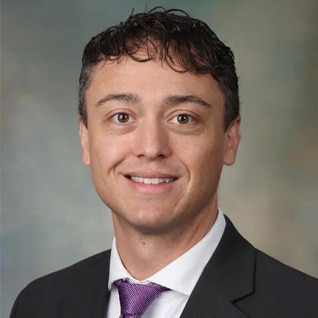 Thank you for your interest in the Neuroradiology Fellowship at Mayo Clinic in Phoenix/Scottsdale, Arizona. Our one-year, ACGME-accredited program is an exceptional opportunity to advance your training within a culture of collaboration, innovation, and excellence in patient care. With world-class faculty, cutting-edge resources like clinical 7T MRI and photon counting CT, and a steadfast commitment to education, we aim to provide a truly enriching and supportive environment for our trainees.
Thank you for your interest in the Neuroradiology Fellowship at Mayo Clinic in Phoenix/Scottsdale, Arizona. Our one-year, ACGME-accredited program is an exceptional opportunity to advance your training within a culture of collaboration, innovation, and excellence in patient care. With world-class faculty, cutting-edge resources like clinical 7T MRI and photon counting CT, and a steadfast commitment to education, we aim to provide a truly enriching and supportive environment for our trainees.
Mayo Clinic in Arizona specializes in the care of complex medical conditions and is a distinguished destination medical center attracting patients domestically and internationally. This unique setting affords our fellows the opportunity to master the skills required of a subspecialty neuroradiologist while enjoying the environment and lifestyle of the desert southwest.
Our fellowship experience is strongly rooted in the three-shield model of Mayo Clinic, where we focus on excellence in patient care, education, and research. Our curriculum has been carefully structured to promote clinical expertise, academic growth, and personal well-being. Trainees are engaged in a wide variety of learning experiences, including high-volume, diverse case exposure, multidisciplinary conferences, weekly didactic lectures, a robust procedural service, and protected research time. We take a proactive approach to wellness through mentorship, schedule flexibility, and institutional resources designed to support every aspect of trainee life. Feedback is actively sought and valued, helping us shape the program to best meet trainees’ needs.
Leadership and teaching opportunities are woven into the fabric of the program. Trainees are invited to take active roles in departmental committees, quality improvement initiatives, and educational development for residents and medical students. Whether your professional goals lie in clinical practice, research, or education, you will find the support and mentorship here to thrive. We look forward to welcoming you to Mayo Clinic in Arizona, where your training experience will be as transformative as it is rewarding.
Nicholas Koontz, M.D.
Neuroradiology Fellowship Program Director
Department and faculty
Mayo Clinic radiologists and staff in the Department of Radiology provide the highest-quality diagnostic and interventional imaging services in a caring and efficient manner while sustaining outstanding programs in research and education.
The Department of Radiology is fully integrated with all the medical services available throughout the Mayo Clinic enterprise. More than 70 radiologists and physicists cooperate with staff to provide diagnostic and therapeutic radiology services to patients, including 15 full-time diagnostic neuroradiologists.
Meet the faculty
In addition to caring for patients in their clinical practices, Mayo Clinic's faculty is committed to teaching and facilitating the growth of medical knowledge. Faculty members have published and lectured extensively and are highly regarded in their fields. Fellows have direct access to these individuals throughout the Neuroradiology Fellowship. Meet some of our faculty:
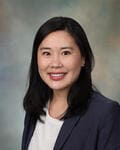 |
Alicia Chen, M.D.Dr. Chen is a clinical instructor of radiology, who joined the Mayo Clinic in Arizona faculty in 2023. She completed a two-year neuroradiology fellowship at Massachusetts General Hospital and a diagnostic radiology residency at Mayo Clinic Rochester. She is actively involved on both the diagnostic and procedural services with particular interest and expertise in the diagnosis and treatment of spinal CSF leaks.
|
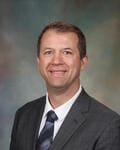 |
Justin Cramer, M.D.Dr. Cramer is an assistant professor of radiology, who joined the Mayo Clinic Arizona faculty in 2022. He completed a two-year neuroradiology fellowship, as well as diagnostic radiology residency at the University of Utah. His research interests are in informatics and artificial intelligence, as well as medical education. |
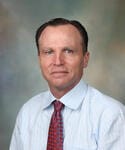 |
Geoffrey Fletcher, M.D.Dr. Fletcher is an assistant professor of radiology, who completed a neuroradiology fellowship at Mayo Clinic in Rochester, Minnesota (1995) and diagnostic radiology residency (1992). |
 |
Joseph Hoxworth, M.D.Dr. Hoxworth is a professor of radiology and chair of the Department of Radiology at Mayo Clinic in Arizona. He completed a neuroradiology fellowship and diagnostic radiology residency at the University of California, San Francisco. His clinical and academic interests include head and neck imaging, and he has received several education awards. |
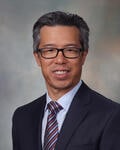 |
Leland Hu, M.D.Dr. Hu is a professor of radiology, who completed a two-year neuroradiology fellowship Barrow Neurological Institute and a diagnostic radiology residency at the University of Texas, Southwestern Medical School. He is the associate director of the M.D.-Ph.D. Program at the Mayo Clinic College of Medicine and Science and has a research focus in brain tumor imaging. |
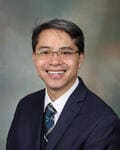 |
Ichiro Ikuta, MD, MMScDr. Ikuta is an assistant professor of radiology, who completed a neuroradiology fellowship at Yale School of Medicine, biomedical informatics fellowship at Harvard, and diagnostic radiology residency at Yale School of Medicine. His research interests include informatics, artificial intelligence, high-field MRI, radiation exposure, and medical education. |
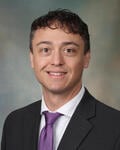 |
Nicholas Koontz, M.D.Dr. Koontz is an associate professor of radiology and program director for the Neuroradiology Fellowship at Mayo Clinic in Arizona. He completed a two-year neuroradiology fellowship at the University of Utah and diagnostic radiology residency at Indiana University School of Medicine. His clinical and research interests include head & neck imaging, imaging-guided procedures, and medical education. |
More faculty
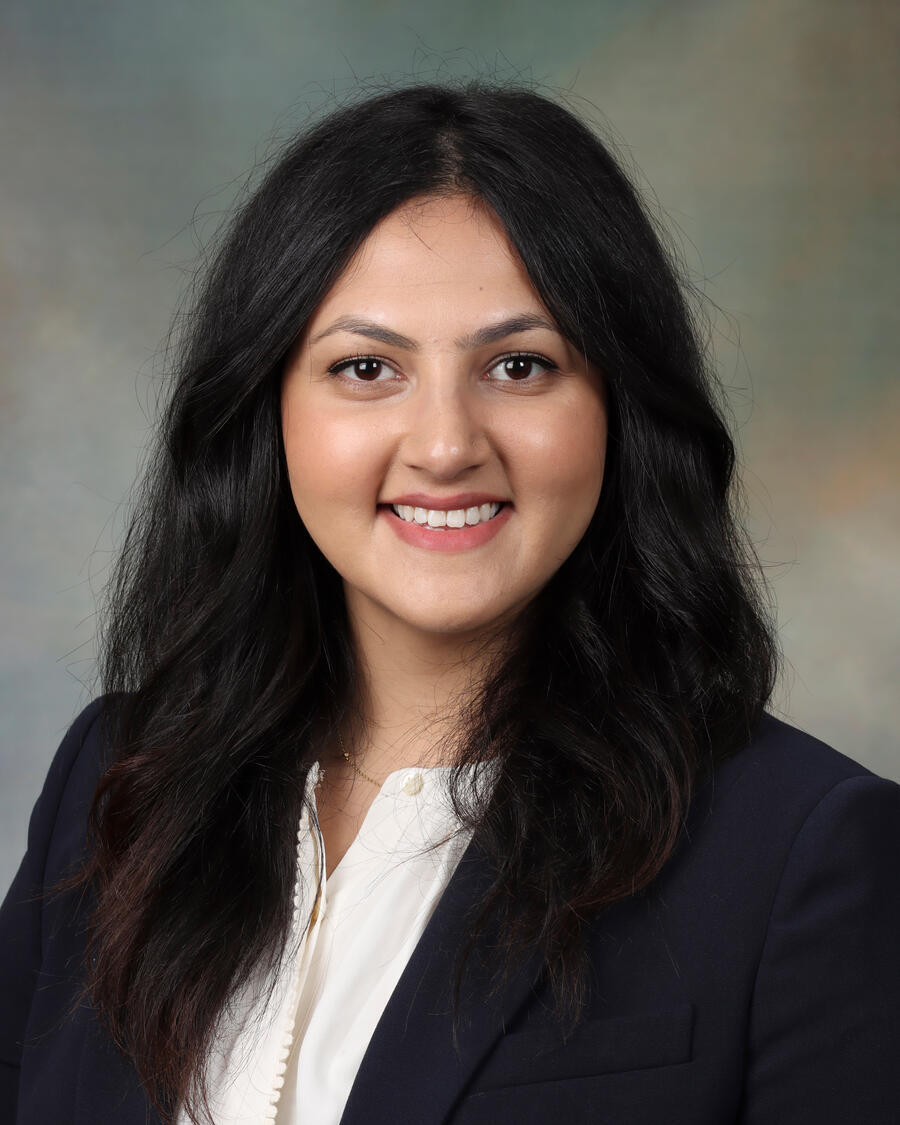 |
Dania Malik, M.D.Dr. Malik is an assistant professor of radiology, who completed a neuroradiology fellowship at the University of Maryland Medical Center and a diagnostic radiology residency at Mayo Clinic in Arizona. Her clinical expertise is in emergency and trauma imaging, and her academic interests include quality improvement and medical education. |
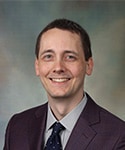 |
Nick Matthees, M.D.Dr. Matthees is an assistant professor of radiology, who completed a neuroradiology fellowship at Barrow Neurological Institute and diagnostic radiology residency at St. Joseph’s Hospital and Medical Center. He also holds a board certification in magnetic resonance safety. He is actively involved on both the diagnostic and procedural services, and he has a strong interest in medical education. He is also the associate program director for the Diagnostic Radiology Residency program. |
 |
Ameet Patel, M.D.Dr. Patel is an Assistant Professor of Radiology, who completed a neuroradiology fellowship at Barrow Neurological Institute and a diagnostic radiology residency at State University of New York Health Science Center. He is Director of Magnetic Resonance Imaging at Mayo Clinic Arizona and is actively involved on both the diagnostic and procedural services. |
 |
Tanya Rath, M.D.Dr. Rath is an Associate Professor of Radiology and Division Chair of Neuroradiology at Mayo Clinic Arizona. She completed a neuroradiology fellowship and diagnostic radiology residency at the University of Michigan. Her clinical expertise and research interests are in head & neck imaging. She is a Past President of the Eastern Neuroradiological Society and has a strong interest in medical education. |
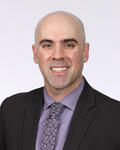 |
Kalen Riley, M.D., M.B.A.Dr. Riley completed a two-year neuroradiology fellowship at the University of Utah, diagnostic radiology residency at Indiana University School of Medicine, and MBA at Indiana Univeristy. His clinical and research expertise are in head & neck imaging and neurovascular imaging, including vessel wall MRI. |
 |
Jeffrey Ross, M.D.Dr. Ross is a Professor of Radiology, who completed a neuroradiology fellowship at University Hospitals of Cleveland/Case Western Reserve University and diagnostic radiology residency at Cleveland Clinic Foundation. He is a former chief editor for the American Journal of Neuroradiology, Past President of the Eastern Neuroradiological Society, Past President of the American Society of Spine Radiology, and Gold Medal Winner of the American Society of Spine Radiology. His clinical and research expertise is in spine imaging. |
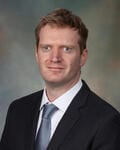 |
Vincent Timpone, M.D.Dr. Timpone is an Associate Professor of Radiology, who completed his neuroradiology fellowship at Massachusetts General Hospital and diagnostic radiology residency at David Grant USAF Medical Center at Travis Air Force Base. His clinical and research expertise are in emergency neuroimaging and imaging-guided procedures, including diagnosis and treatment of CSF leaks. |
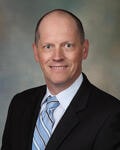 |
Eric Wannamaker, M.D.Dr. Wannamaker is an Assistant Professor of Radiology, who completed a neuroradiology fellowship and diagnostic radiology residency at the University of Colorado School of Medicine. His clinical expertise is in emergency neuroimaging with interests in medical education and quality improvement. |
Wellness initiatives
As a trainee, your physical and mental health are priorities to Mayo Clinic and the department. Trainees have access to several resources to promote well-being, as well as time off clinical duties to attend appointments.
- Fitness centers
- Groups on campus
- Well-being
Fitness centers
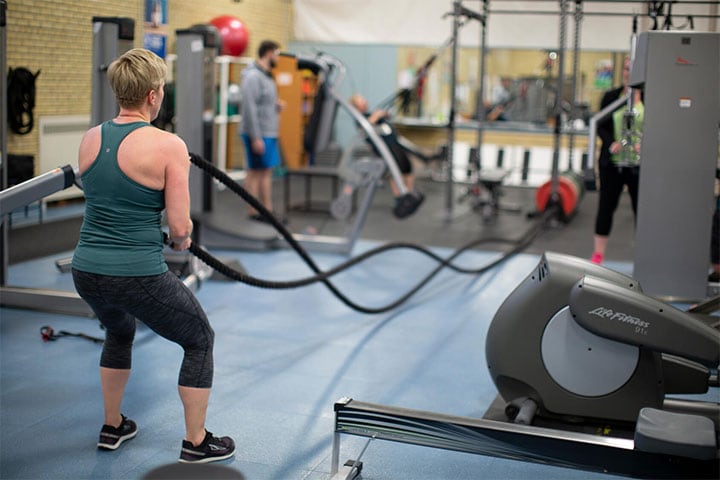 As a resident or fellow at Mayo Clinic in Arizona, you have access to an exclusive learners-only gym and wellness center conveniently located in Phoenix. Additionally, Mayo Clinic residents or fellows at our three campuses get discounted membership fees to area gyms through PerkSpot, the Mayo Clinic employee discount program.
As a resident or fellow at Mayo Clinic in Arizona, you have access to an exclusive learners-only gym and wellness center conveniently located in Phoenix. Additionally, Mayo Clinic residents or fellows at our three campuses get discounted membership fees to area gyms through PerkSpot, the Mayo Clinic employee discount program.
All Mayo employees, including Arizona learners, can also sign up to take live virtual fitness classes or view recorded fitness classes offered by the Dan Abraham Healthy Living Center (DAHLC).
Groups on campus
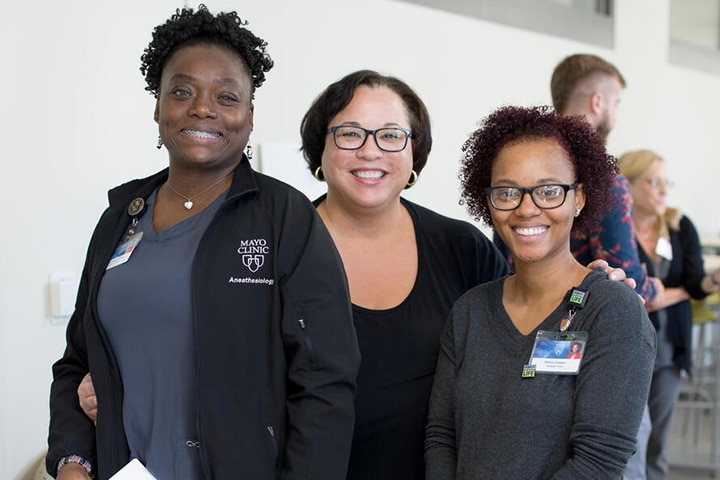 Opportunities to join a variety of groups on campus provide regular social activities and can help enhance your training while connecting with a broad group of peers.
Opportunities to join a variety of groups on campus provide regular social activities and can help enhance your training while connecting with a broad group of peers.
Trainees have the opportunity to join a Mayo Employee Resource Group (MERG) at any time during their training program. MERGs are employee-led affinity groups to promote belonging, increase cultural awareness, and foster an environment of respect and inclusivity. Any Mayo Clinic employee can join a group of interest and choose their level of involvement.
Well-being
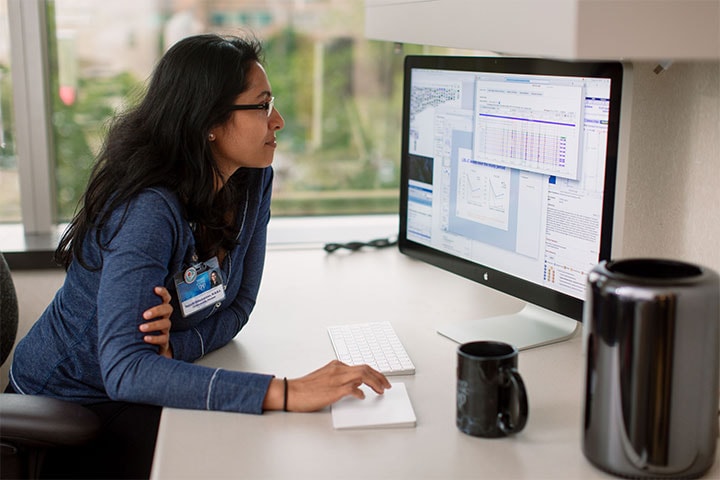 The Office of Academic Support and Well-Being provides resources to promote academic, emotional, social, cognitive, financial, and physical well-being. Career and academic services include academic advising, peer tutoring, and accommodations for learners with disabilities or health conditions. Mental health services, counseling, interview practice, and a variety of enrichment sessions on topics like budgeting, resiliency, and stress and burn-out are also available through the Academic Support and Well-Being office.
The Office of Academic Support and Well-Being provides resources to promote academic, emotional, social, cognitive, financial, and physical well-being. Career and academic services include academic advising, peer tutoring, and accommodations for learners with disabilities or health conditions. Mental health services, counseling, interview practice, and a variety of enrichment sessions on topics like budgeting, resiliency, and stress and burn-out are also available through the Academic Support and Well-Being office.
More from Mayo Clinic School of Graduate Medical Education
/0x0:512x512/prod01/channel_2/media/mccms/content-assets/academics/residencies-and-fellowships/3319834_0363-512X512.jpg)
Choosing Mayo Clinic
/0x0:512x512/prod01/channel_2/media/mccms/content-assets/shared-documents/campus-AZ-3180811-0001-pic-tile.jpg)
Phoenix/Scottsdale, AZ
Campus and community/0x0:512x512/prod01/channel_2/media/studio-sites/mccms-reference-guide/512X5121676671_3824027_0010_C.jpg)
/1120x0:5600x4480/prod01/channel_2/media/mccms/content-assets/academics/residencies-and-fellowships/neuroradiology-fellowship-arizona/mccms-neuroradiology-fellowship-WF1420950_0052.jpg)
/0x0:440x220/prod01/channel_2/media/mccms/content-assets/campus-amp-community/arizona/440X220_sidebar-mayo-clinic-phoenix-arizona-is453080663.jpg)